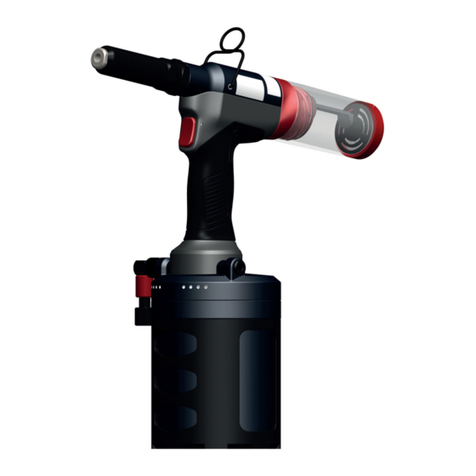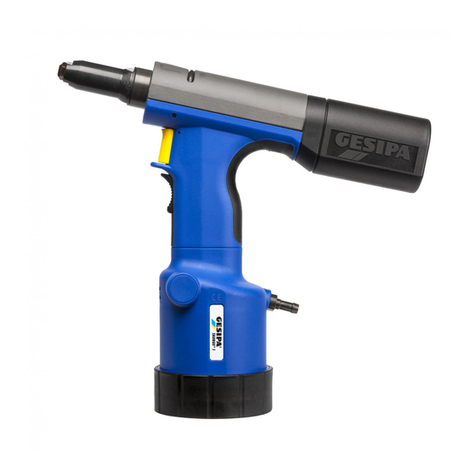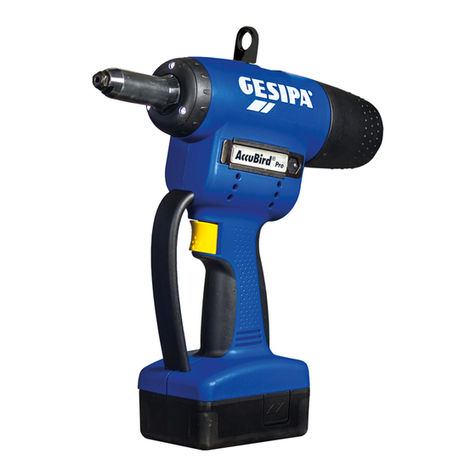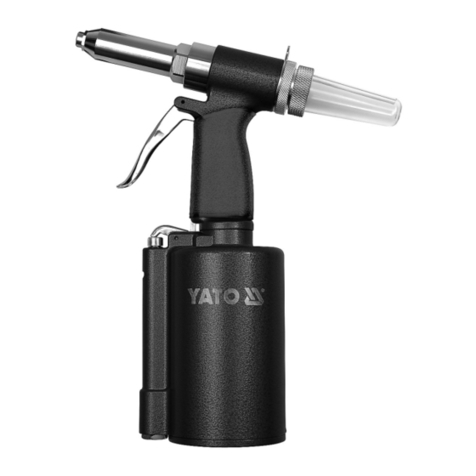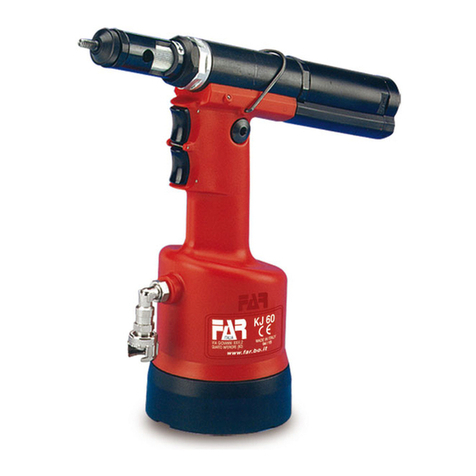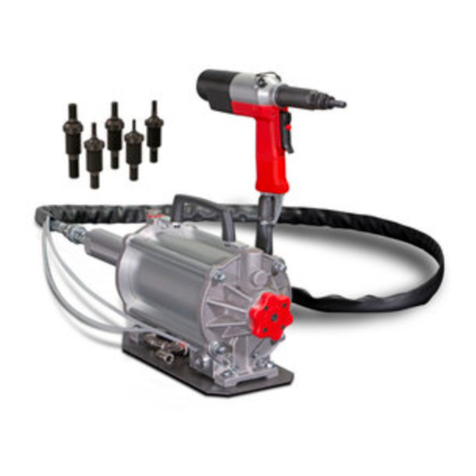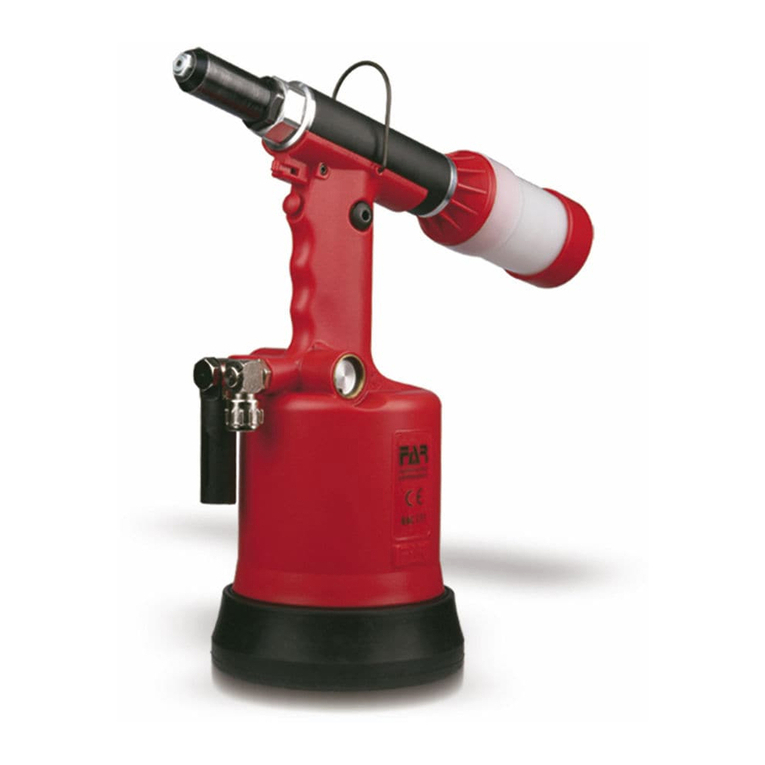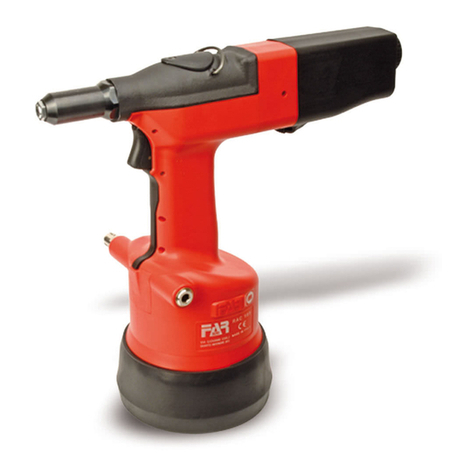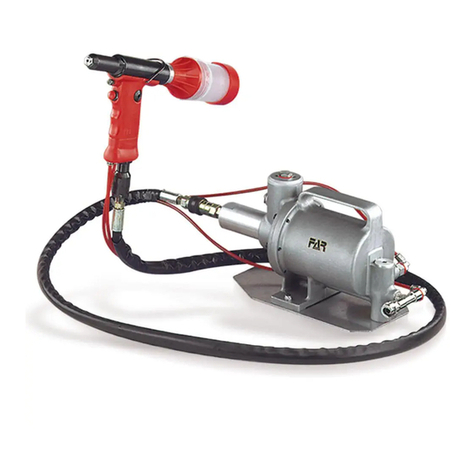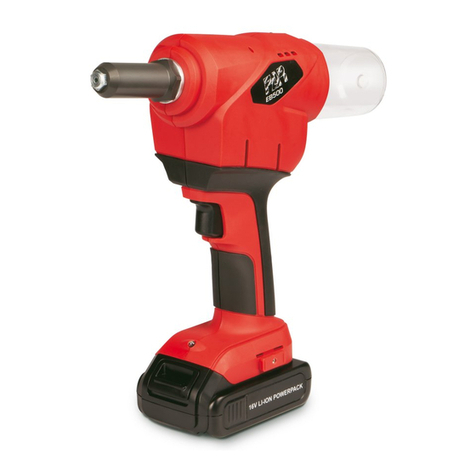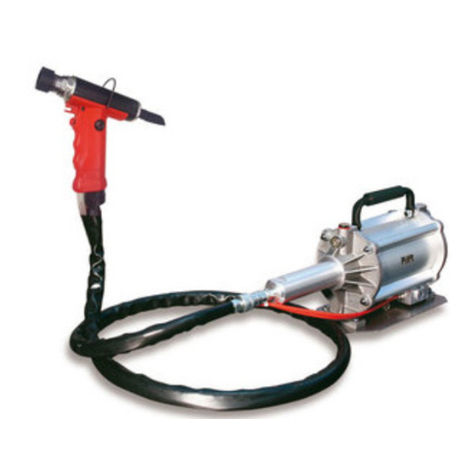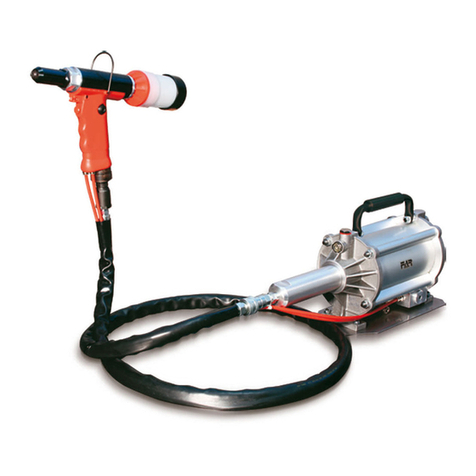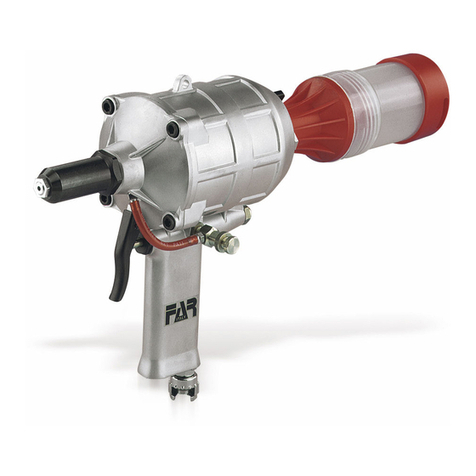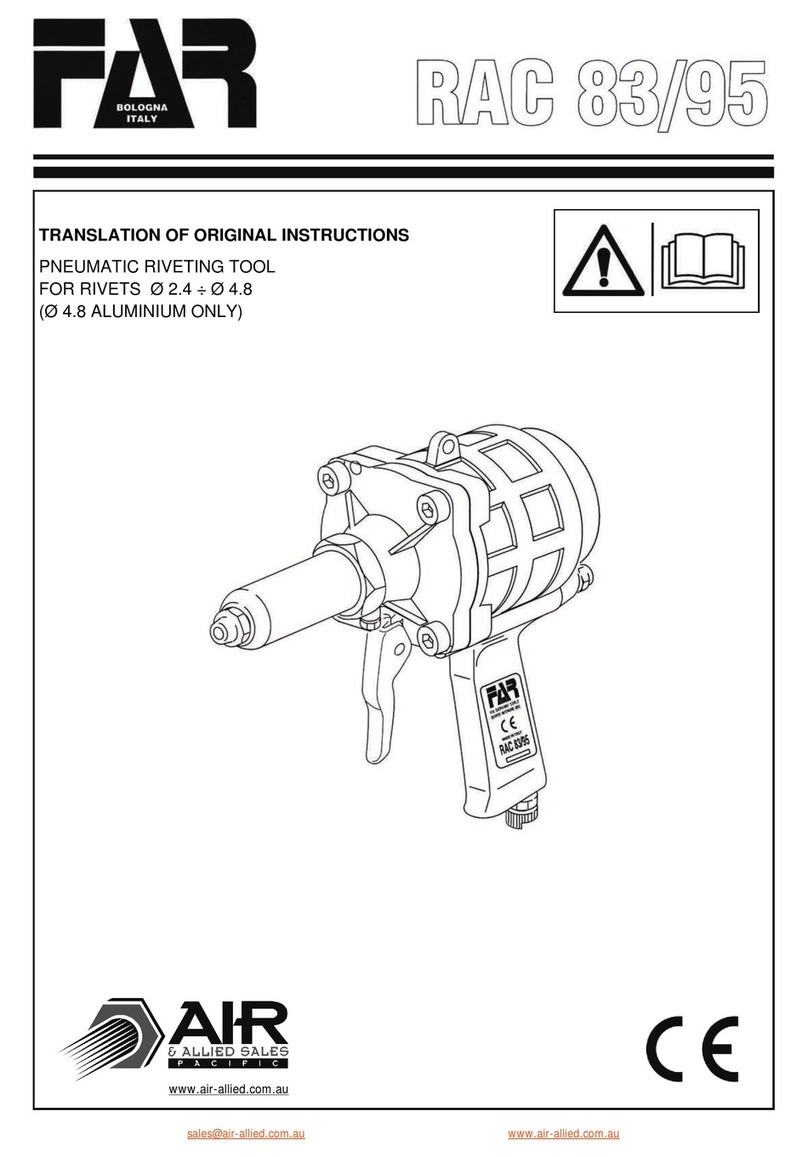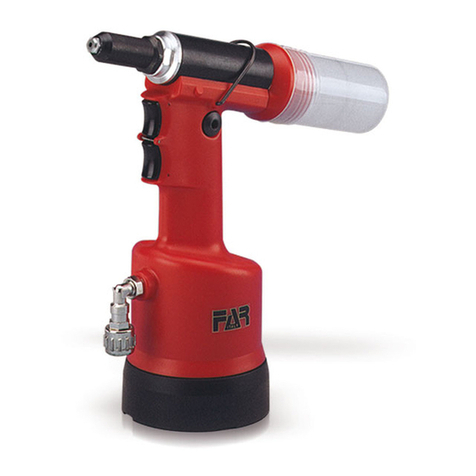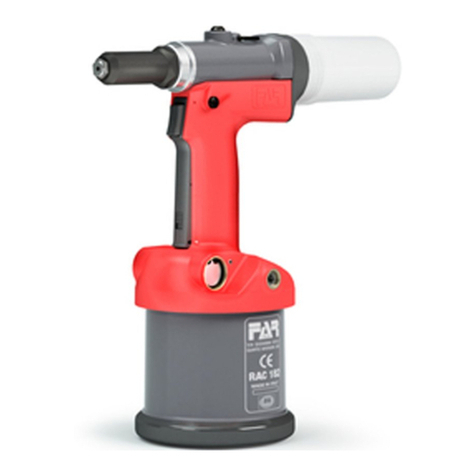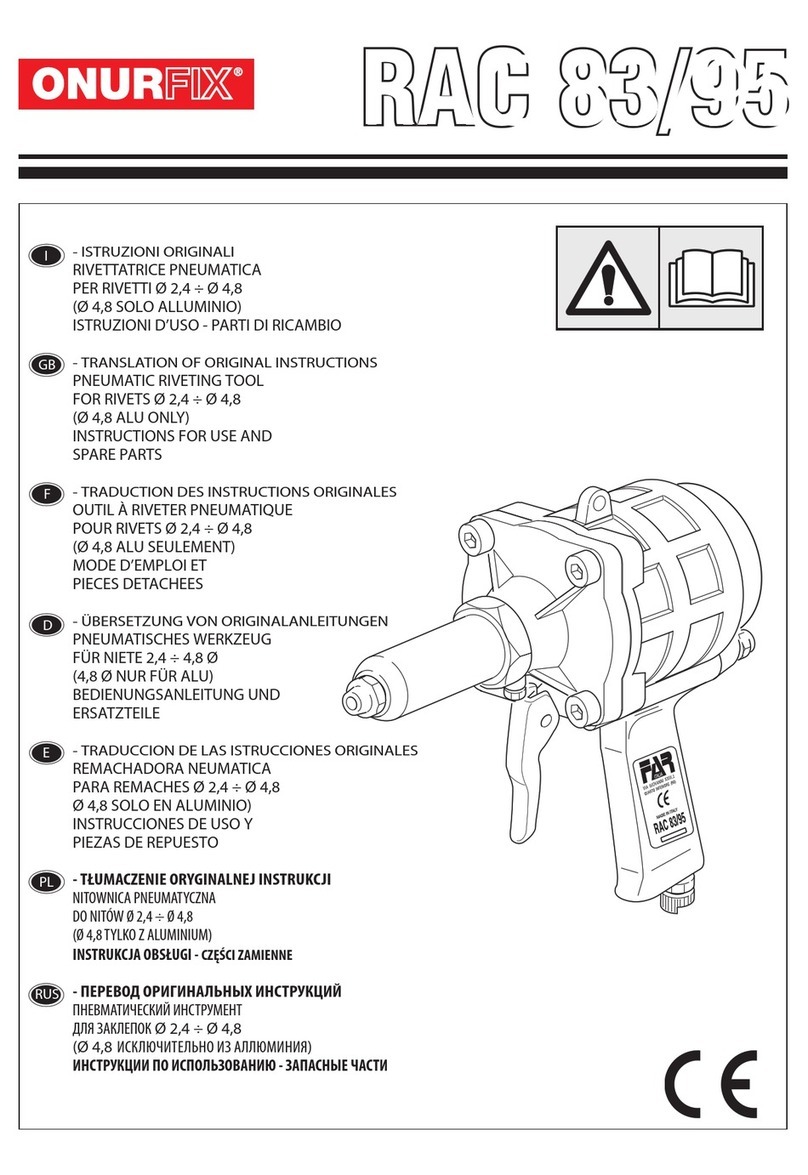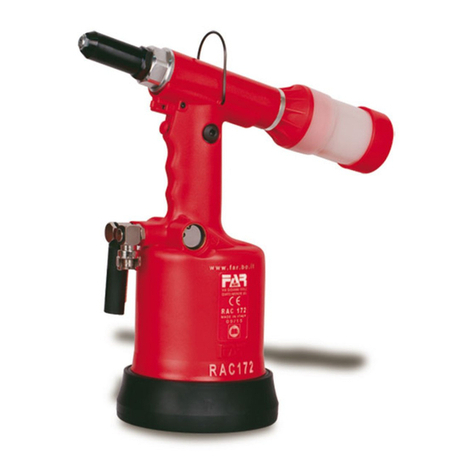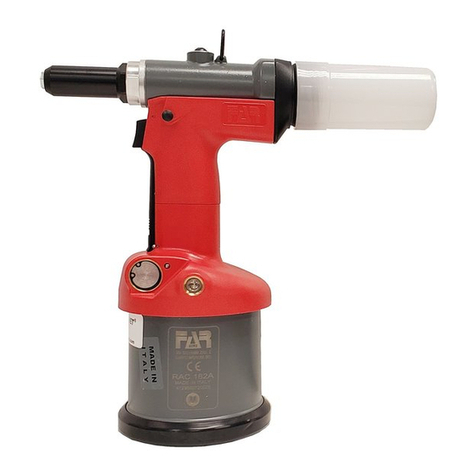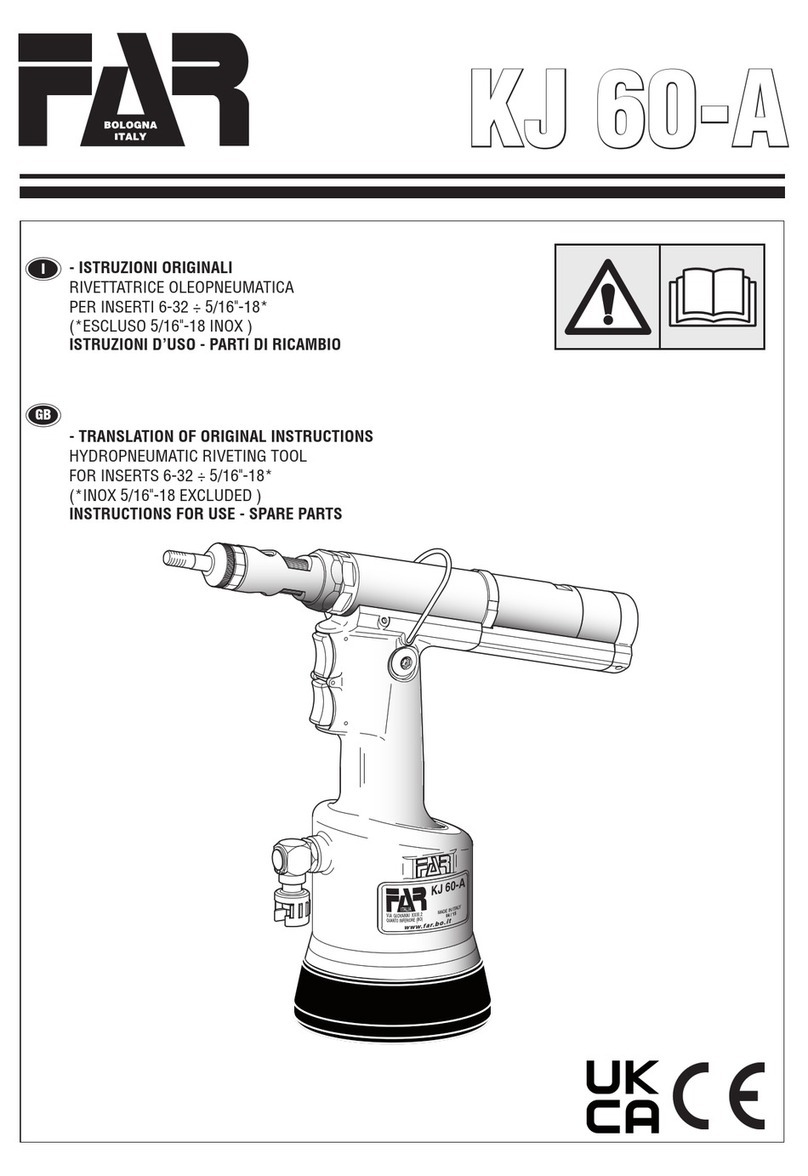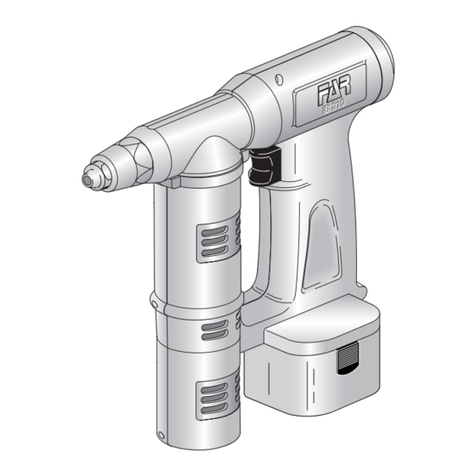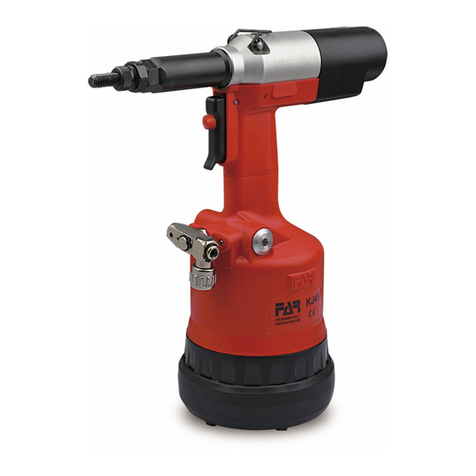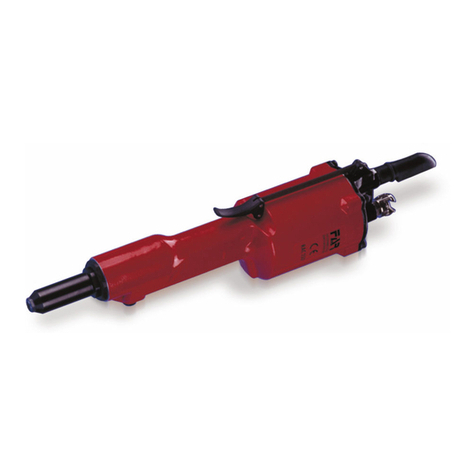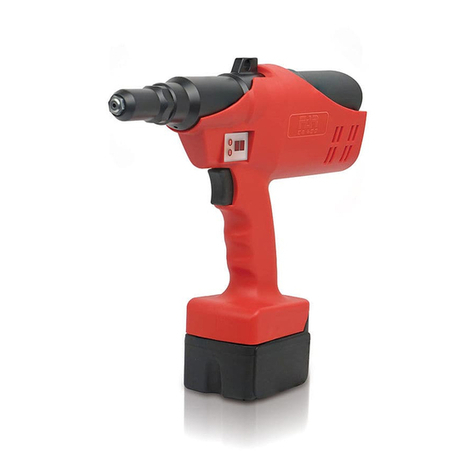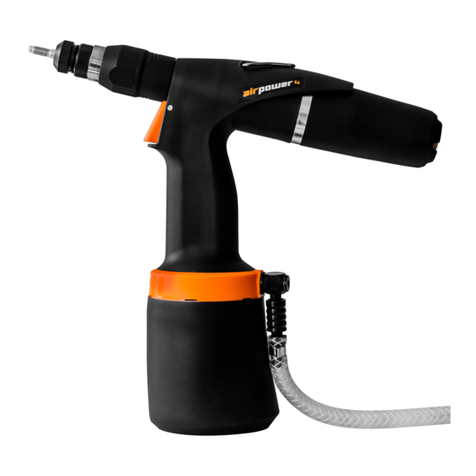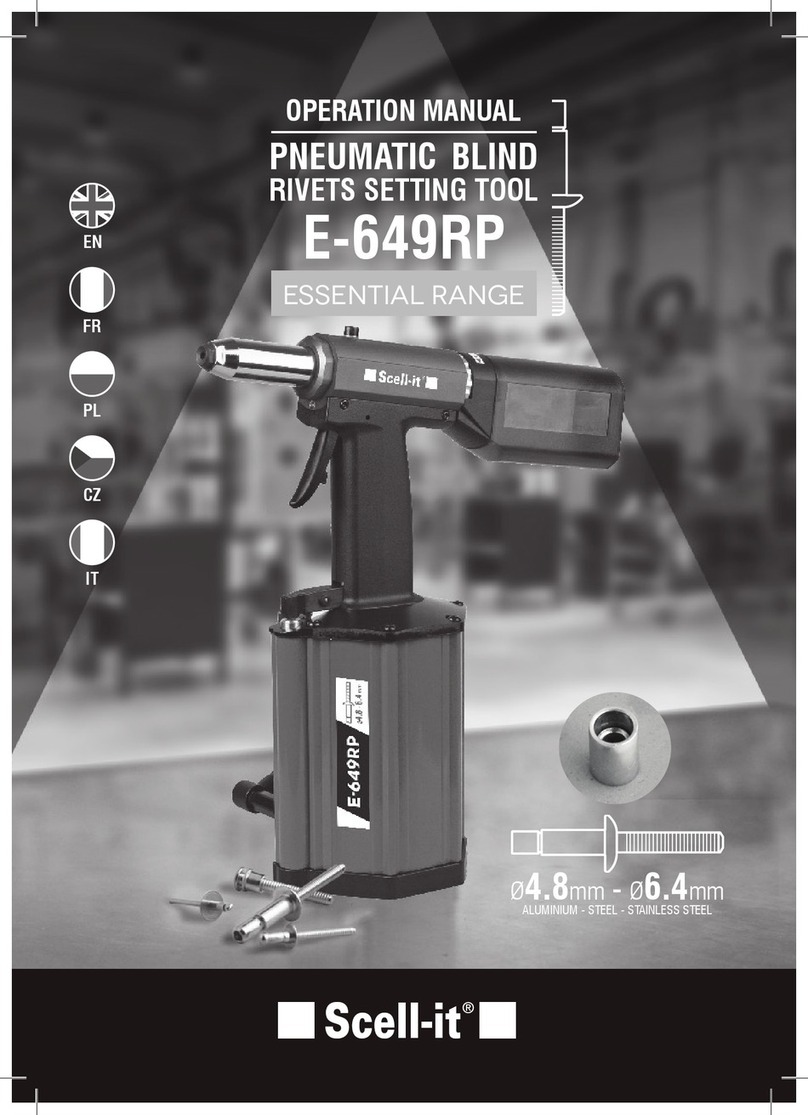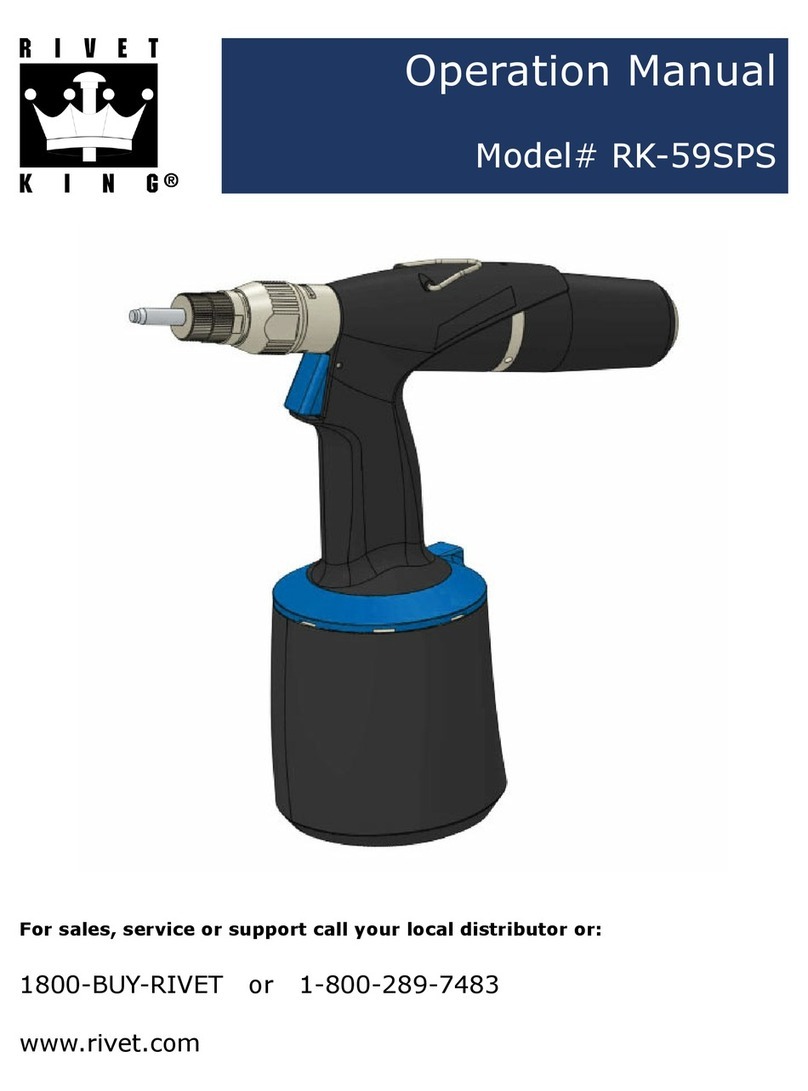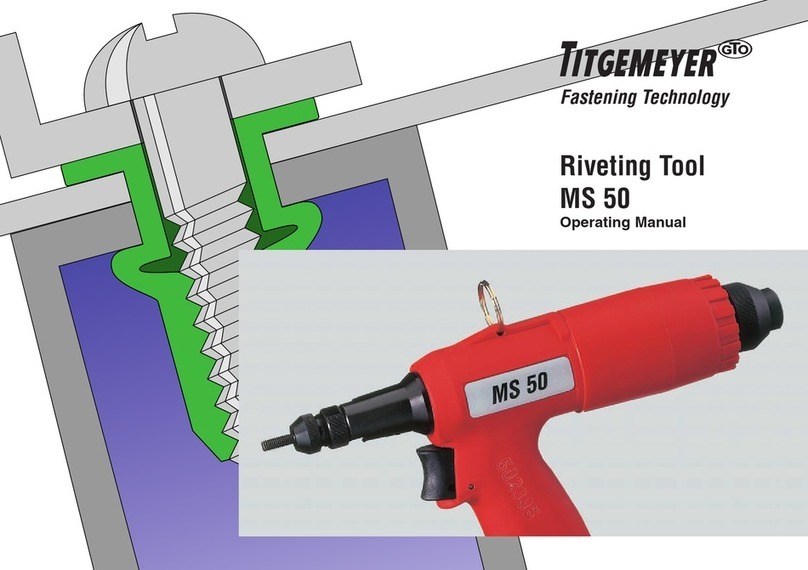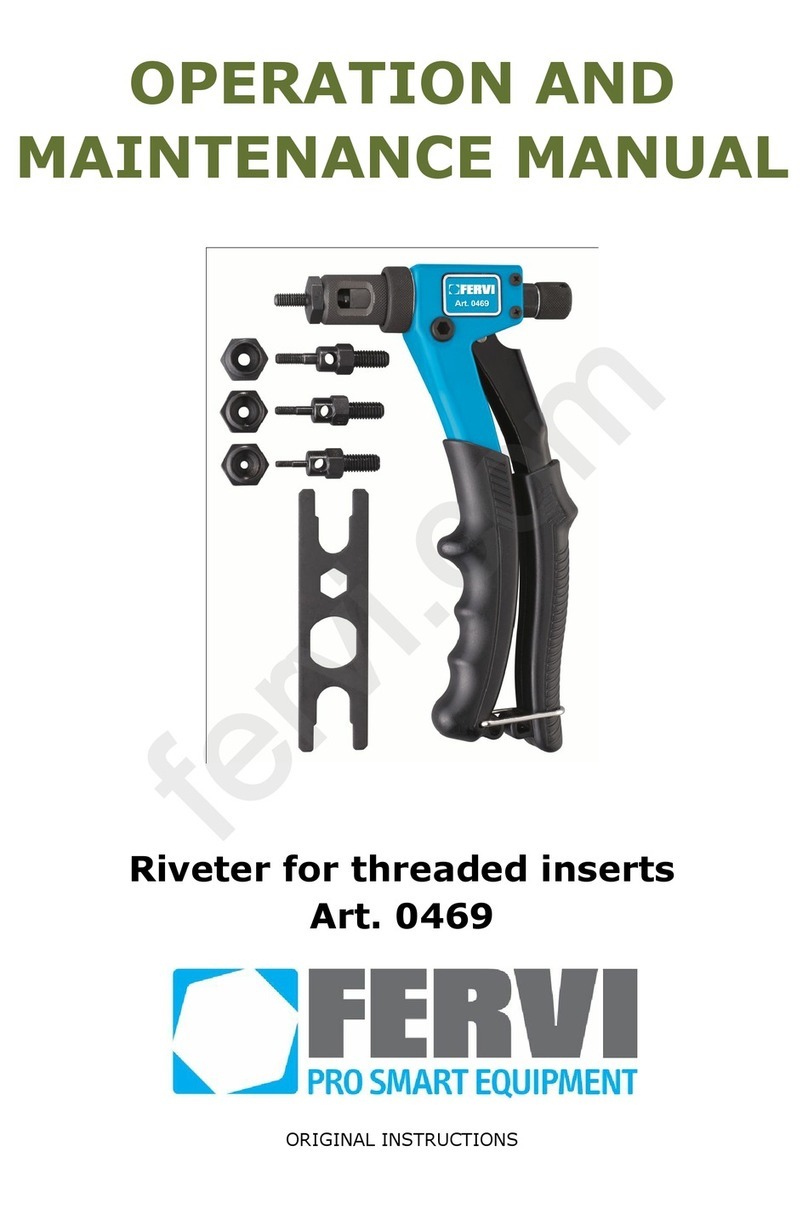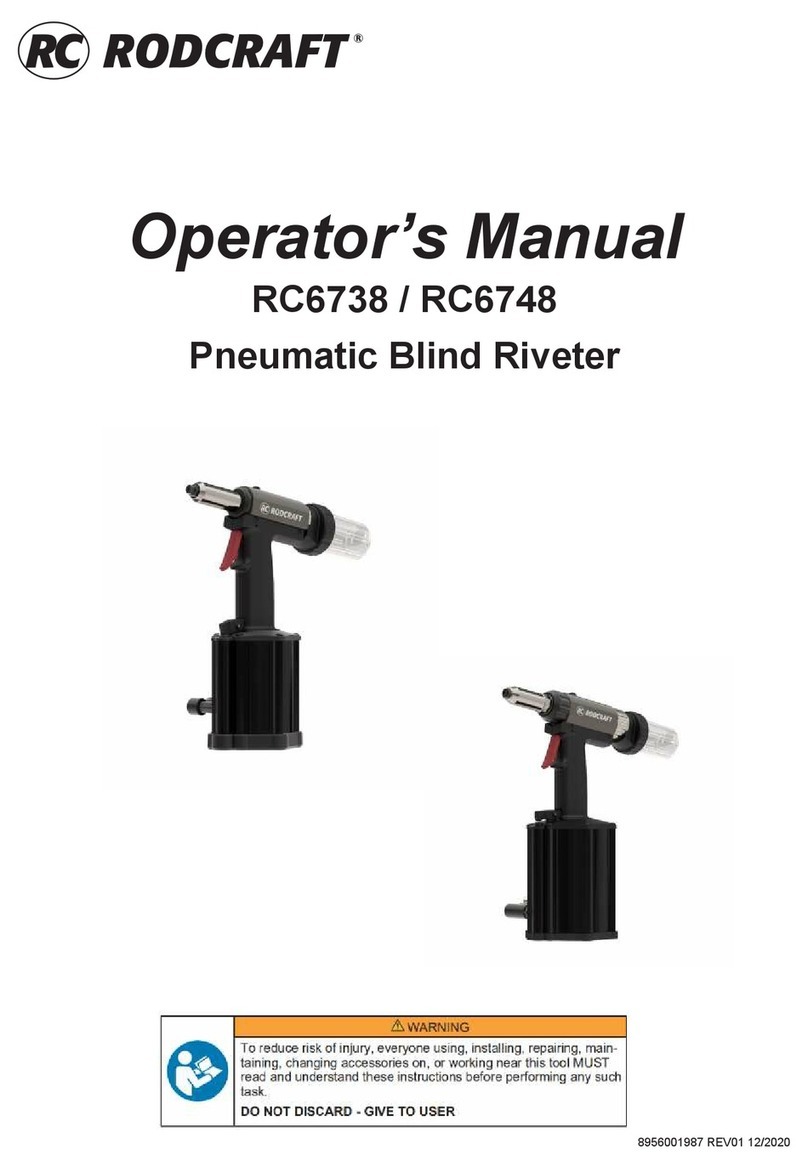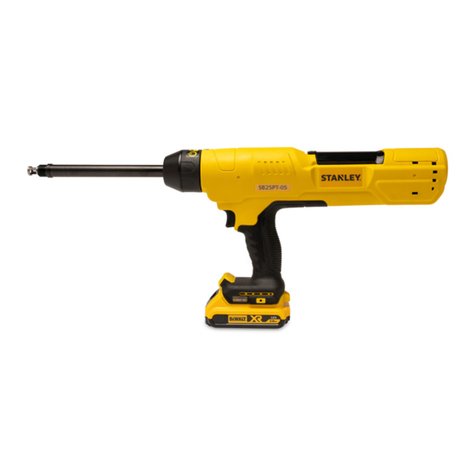
IKJ 45/S-A
Date 06-2022 Revisione - 034
ISTRUZIONI D’USO I
INDICE
GARANZIA ............................................................................4
AVVERTENZE E MISURE DI SICUREZZA...............................4
IDENTIFICAZIONE DELLA RIVETTATRICE .............................5
NOTE GENERALI E CAMPO DI APPLICAZIONE.....................5
PARTI PRINCIPALI................................................................5
DATI TECNICI........................................................................5
ALIMENTAZIONE DELL’ARIA.................................................6
OPERAZIONI PRELIMINARI..................................................6
POSA IN OPERA DELL’INSERTO...........................................7
ANOMALIE DI FUNZIONAMENTO..........................................8
CAMBIO DI FORMATO ..........................................................9
REGOLAZIONE DEL GRUPPO TIRANTE TESTINA ...............10
RABBOCCO OLIO NEL CIRCUITO OLEODINAMICO.............11
MANUTENZIONE.................................................................11
SMALTIMENTO DELLA RIVETTATRICE ...............................11
ATTENZIONE!!!
La mancata osservanza o trascuratezza delle
seguenti avvertenze di sicurezza può avere
conseguenze sulla vostra o altrui incolumità e
sul buon funzionamento dell’utensile.
•Leggereattentamenteleistruzioniprimadell’uso.
•Perleoperazionidimanutenzionee/oriparazioneaffidarsi
a centri di assistenza autorizzati dalla FAR s.r.l. e fare uso
esclusivo di pezzi di ricambio originali. La FAR s.r.l. declina
ogni responsabilità per danni da particolari difettosi, che
si dovessero verificare per inadempienza di quanto sopra
(Direttiva CEE 85/374).
L’ELENCO DEI CENTRI DI ASSISTENZA È DISPONIBILE SUL
NS. SITO WEB: http://www.far.bo.it ( Organizzazione )
•Siraccomandal’usodell’utensiledapartedipersonale
specializzato.
•Durantel’impiegodell’utensile,usareocchialiovisiere
protettive e guanti.
•Pereseguireleoperazionidimanutenzionee/odiregolazione
dell’utensile utilizzare gli accessori in dotazione e/o le
attrezzature commerciali indicate nel capitolo Manutenzione.
ATTENZIONE! In caso di urti violenti o cadute accidentali
occorre procedere alla completa revisione della
macchina.
GARANZIA
Le rivettatrici FAR sono coperte da garanzia di 12 mesi.
Il periodo di garanzia dell'attrezzo decorre dal momento
della sua comprovata ricezione da parte dell'acquirente. La
garanzia copre l'utente/acquirente quando l'attrezzo viene
acquistato attraverso un rivenditoreautorizzato esolo quando
viene impiegato per gli usi per i quali è stato concepito. La
garanzia non è valida se l'attrezzo non viene utilizzato e se
non viene sottoposto a manutenzione come specificato nel
manuale di istruzione e manutenzione. In caso di difetti o
guasti la FAR S.r.l. si impegna unicamente a riparare e/o
sostituire, a propria discrezione esclusiva, i componenti
giudicati difettosi.
AVVERTENZE E MISURE Dl SICUREZZA
• Perleoperazionidicaricaolio,usaresolofluidicon
caratteristiche indicate nel presente fascicolo.
• Incasodiperditeaccidentalidioliochedovesserovenire
a contatto con la pelle, lavarsi accuratamente con acqua e
sapone alcalino.
• L’utensilepuòesseretrasportatoamanoedèconsigliabile,
dopo l’uso, riporlo nel proprio imballo.
• Si consigliaaifinidiuncorrettofunzionamentodella
rivettatrice, una revisione semestrale.
• Gliinterventidiriparazioneepuliziadell’utensiledovranno
essere eseguiti con macchina non alimentata dall’aria
compressa.
• È consigliabile,ovepossibile,I’usodiunbilanciatoredi
sicurezza.
• Incasodiesposizionequotidianapersonaleinambienteil
cui livello di pressione acustica dell’emissione ponderata
A sia superiore al limite di sicurezza di 70 dB (A), fare uso
di adeguati mezzi individuali di protezione dell’udito (cuffia
o tappo antirumore, diminuzione del tempo di esposizione
quotidiana etc...).
• Mantenereilbancoe/ol’areadilavoropulitaeordinata,il
disordine può causare danni alla persona.
• Nonlasciarechepersoneestraneeallavorotocchinogli
utensili.
• Assicurarsicheitubidialimentazionedell’ariacompressa
siano correttamente dimensionati per l’uso previsto.
• Nontrascinarel’utensilecollegatoall’alimentazionetirandolo
per il tubo; mantenere quest’ultimo lontano da fonti di calore
e da oggetti taglienti.
• Manteneregliutensiliinbuonostatod’usoepuliti,non
rimuovere mai le protezioni e il silenziatore dell’utensile.
•Dopoavereeseguitooperazionidiriparazionee/o
registrazione assicurarsi di avere rimosso le chiavi di servizio
o di registrazione.
•Primadiscollegareiltubodialimentazionedell’aria
compressa dalla rivettatrice, assicurarsi che quest’ultimo
non sia in pressione.
• Attenersiscrupolosamenteaquesteistruzioni.
